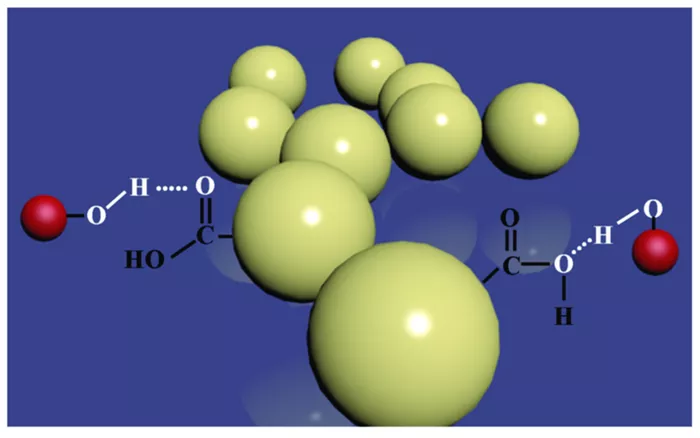Cholera is an acute diarrheal disease caused by the bacterium Vibrio cholerae. It spreads rapidly through contaminated water or food, leading to severe dehydration and death if untreated. The infection thrives in areas with poor sanitation, overcrowding, and limited access to clean drinking water. When people consume water or food contaminated with cholera bacteria, they can become ill within hours to days.
The symptoms often begin suddenly and include profuse watery diarrhea, vomiting, and leg cramps. The rapid loss of fluids can cause severe dehydration, leading to shock and even death if medical treatment is not promptly provided. Because cholera can kill within hours, it is considered a medical emergency and requires urgent intervention. Its rapid transmission and devastating effects make cholera one of the most feared infectious diseases worldwide.
Why Do Cholera Outbreaks Occur Repeatedly?
Cholera outbreaks often flare up in regions affected by war, natural disasters, or poor infrastructure. In such conditions, water and sanitation systems break down, and safe drinking water becomes scarce. Floods, earthquakes, and hurricanes can contaminate water sources, while displacement of populations into crowded camps increases the risk of rapid disease spread.
In many low-income countries, inadequate sewage disposal and lack of clean water remain a constant challenge. These conditions create the perfect environment for cholera to spread. Furthermore, climate change intensifies the frequency and severity of flooding, which can amplify cholera transmission cycles. Outbreaks are often seasonal and can reoccur year after year if the root causes, such as poor sanitation and unsafe water, are not addressed effectively.
How Does Cholera Affect Communities?
The impact of cholera on communities is devastating both medically and socially. Victims suffer intense dehydration, weakness, and exhaustion, which can cause long-term health problems even after recovery. Children and elderly people are especially vulnerable. High death rates strain healthcare systems, which may already be under-resourced.
Beyond health, cholera outbreaks disrupt economies. Illness reduces workforce productivity as patients and caregivers miss work. Schools may close to prevent disease spread, disrupting education. The cost of treating cholera, providing clean water, and rebuilding infrastructure places heavy financial burdens on affected regions. Stigma and fear often accompany outbreaks, leading to social isolation of the sick and their families.
What Are the Challenges in Controlling Cholera?
Controlling cholera is complex and requires coordinated efforts on multiple fronts. One major challenge is rapid detection. Outbreaks can spread before health authorities recognize the problem, especially in remote or conflict-affected areas with limited surveillance. Delays in diagnosis and response allow the disease to escalate quickly.
Another obstacle is limited access to treatment. Cholera patients require immediate rehydration, usually through oral rehydration salts (ORS) or intravenous fluids in severe cases. In many affected areas, healthcare facilities are sparse or overwhelmed. Shortages of medical supplies and trained personnel worsen outcomes. Preventing spread also requires improving water, sanitation, and hygiene (WASH) infrastructure, which demands significant investments and long-term planning.
How Can Treatment Save Lives?
Treatment of cholera focuses primarily on rapid rehydration. Oral rehydration therapy (ORT), which uses a simple solution of salts and sugars, can save most patients when started early. For severe dehydration, intravenous fluids are necessary to quickly restore lost fluids and electrolytes. Antibiotics can reduce the duration and severity of illness in some cases but are not the mainstay of treatment.
Prompt treatment can reduce cholera mortality rates from over 50% to less than 1%. Therefore, early identification and access to rehydration therapy are vital. Mobile clinics, community health workers, and cholera treatment centers have proven effective in reaching patients quickly during outbreaks. Educating communities about recognizing symptoms and seeking treatment immediately also improves survival rates.
What Role Does Water and Sanitation Play?
Safe drinking water and proper sanitation are the cornerstones of cholera prevention. Since the disease spreads through contaminated water and food, ensuring access to clean water sources is critical. Simple measures like boiling water, using water purification tablets, and safe storage can reduce transmission dramatically.
Sanitation infrastructure such as functioning toilets, sewage treatment, and waste disposal systems prevents contamination of water supplies. Handwashing with soap is another simple yet powerful way to reduce infection risk. However, improving water and sanitation requires substantial investments, especially in impoverished areas. Long-term solutions include building piped water systems, latrines, and educating communities on hygiene practices.
Can Vaccines Help Control Cholera Outbreaks?
Vaccines against cholera have become an important tool in outbreak response and prevention. Oral cholera vaccines (OCVs) are safe and effective, providing short- to medium-term protection. They are especially valuable in emergency situations such as refugee camps or after natural disasters.
Mass vaccination campaigns have been successful in reducing the scale and duration of outbreaks. However, vaccines are not a substitute for improving water and sanitation. They serve as a bridge, buying time while longer-term infrastructure improvements are made. Additionally, vaccine supplies and cold chain logistics limit the speed and reach of vaccination efforts in some settings.
What Are the Global Efforts to Combat Cholera?
International organizations such as the World Health Organization (WHO), UNICEF, and Médecins Sans Frontières (Doctors Without Borders) lead efforts to combat cholera through surveillance, outbreak response, and support for water and sanitation improvements. The Global Task Force on Cholera Control aims to reduce cholera deaths by 90% by 2030.
These groups assist countries in detecting outbreaks early, mobilizing treatment and vaccination campaigns, and improving infrastructure. Collaboration with governments, local communities, and NGOs is essential for success. Funding and political commitment remain challenges, but increased global attention has raised hopes for significant progress.
How Can Communities Protect Themselves?
Community engagement is vital in controlling cholera. Educating people about hygiene, safe water use, and early symptom recognition empowers them to reduce risks and seek treatment promptly. Local leaders and health workers play key roles in spreading information and coordinating responses.
Simple behavioral changes, such as handwashing before eating and after using the toilet, safe food handling, and using latrines, can greatly reduce transmission. Communities must also demand and support improvements in water and sanitation services. Together with external assistance, informed communities become the first line of defense against cholera.
What Is the Prospect of Cholera Control?
The fight against cholera is ongoing and requires sustained commitment. Advances in vaccines, diagnostics, and treatment offer new hope. However, the ultimate solution lies in addressing the root causes: poverty, inadequate infrastructure, and lack of education.
Investing in clean water, sanitation, and health systems will protect millions from this deadly disease. Climate change adaptation is also critical, as changing weather patterns influence cholera’s spread. Global cooperation, political will, and community participation must converge to eliminate cholera as a public health threat.
Cholera is preventable, treatable, and controllable. With determined action and resources, we can break the cycle of outbreaks and save countless lives worldwide. The question remains: how quickly can the world respond before more lives are lost?
Related Topics

































